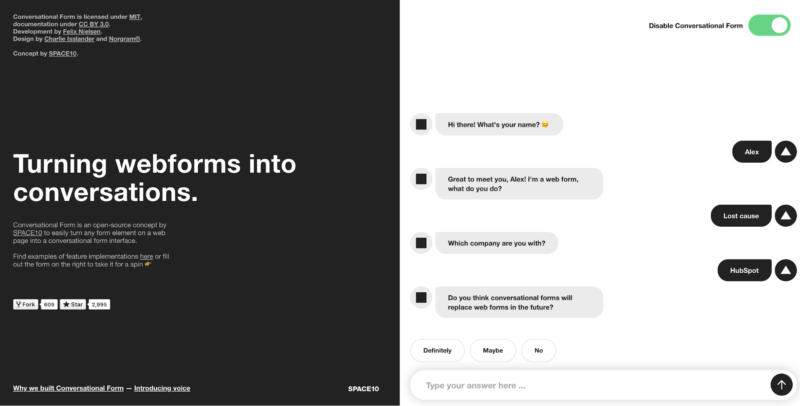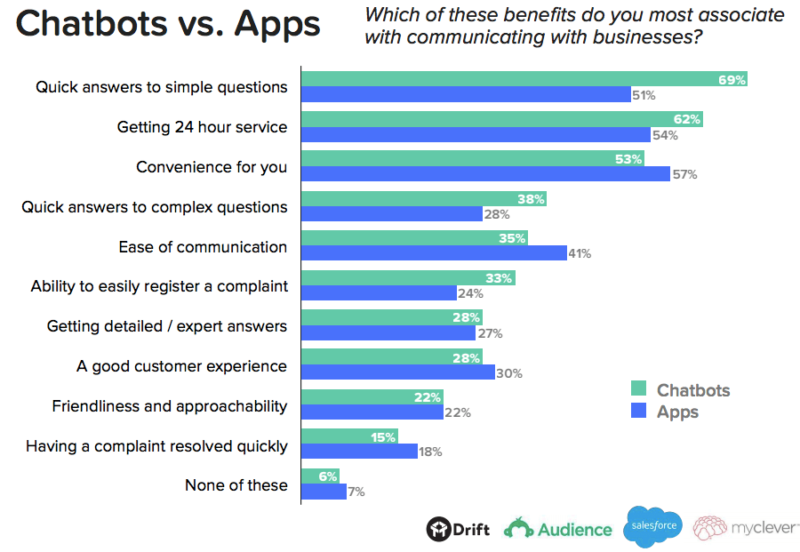What does online lead generation look like in 2019?
A good campaign uses optimized forms (the result of user testing), well-designed chatbots and a data processing strategy that provides useful insights.
If you ignore the noise and trends that arise each year (and the predictions, so many predictions), the simple truth is that most marketing activities are fundamentally focused on gaining and keeping additional customers. For many businesses, particularly in B2B, this means increasing the quantity and quality of your leads.
At HubSpot (my employer), this is obviously a big focus, so we conducted research recently to see how marketers are looking at lead generation and lead capture in the modern era. With all the talk about conversational marketing, the increasing prevalence of analytics, data enrichment and experimentation we wondered, “what has changed, and what is still the same?”
Here’s a summary of what we learned as well as what it means for your marketing efforts moving forward.
Forms still matter
While everyone the MarTech space keeps talking about the emergence of chatbots, and forms being boring and frustrating, most marketers are still using forms. And most consumers still have no problem filling them out (so long as they are well designed, which we’ll get into).
There are 74 percent of marketers using web forms for lead generation, and 49.7 percent of marketers say that web forms are their highest converting lead generation tool.
Of course, chatbots, live chat, quizzes and all other forms of lead capture have their place. But I wouldn’t count out forms in 2019.
Measurement and optimization are underutilized
We asked respondents about three data-driven research methodologies:
- Form analytics – setting up measurement to see drop off rates and calculate the conversion rate of your forms.
- User testing – a form of usability testing where you ask a user to perform a task on your site and watch how they complete it.
- A/B testing – putting a new variation against the original to see which one performs better, using statistical tests.
It’s best practice to make decisions using data, do user research, and run experiments, right?
Sure, but many marketers still aren’t doing any of those things, at least when it comes to their forms. For instance, 36 percent of respondents said they run zero user tests on their forms.
A quarter of marketers said they aren’t using form analytics, and about 45 percent of marketers don’t do any A/B testing on their forms:
But those who are using analytics, user tests, and A/B tests all report better results (unsurprisingly).
For instance, marketers who run A/B tests on their forms tend to be more satisfied than those who don’t. They also report roughly 10 percent higher conversion rates than those who don’t run A/B tests.
Those who use form analytics report, 15 percent higher satisfaction with their lead generation efforts and 19 percent higher conversion rates.
Finally, we found that people who run user tests are more satisfied with their lead generation programs than those who don’t and that the satisfaction rating increases as the number of user tests rise.
Our survey backs common intuition: data-driven decision making and design are more effective.
Interactive forms and conversational marketing
One thing that inspires a lot of discussion is “conversational marketing.” Where a traditional web form is a static experience, “conversational marketing” tools hope to mimic the one-to-one nature of a human conversation.
Tactically, this usually means chatbots, but there are other cool iterations, such as the way Typeform designs their forms one step at a time (with conditional logic) or how Conversational Form works:
So far, most of the hype and excitement marketers feel for the technology has been unanswered by any sign of happiness on the part of the customers.
There has been mixed research on the topic. For instance, SalesForce published a study that suggests 69 percent of consumers prefer chatbots for quick communication. But if you read closely, the question was actually only comparing chatbot to application-based support for a series of customer service benefits like “convenience.”
Most research suggests the opposite: customers mostly prefer human interaction at this point.
One such study [.pdf], commissioned by PwC, found the following:
Today, 64 percent of U.S. consumers and 59 percent of all consumers feel companies have lost touch with the human element of customer experience. 71 percent of Americans would rather interact with a human than a chatbot or some other automated process.
It’s not difficult to understand why consumers feel that way when they’re greeted with experiences like this time after time:
Source: chatbot.fail
People love the convenience, though, so it’s not impossible to make chatbots and automation work.
But you have to strike a balance between economic efficiency for the marketer, convenience for the customer, and the human touch that makes the experience feel delightful.
Most of the time, this involves an intelligence balance of automation and personalization. As a rule of thumb, you can try to automate 80 percent of the experience, but leave the final 20 percent open for human interpretation and personalized touchpoints.
This way, you can achieve the efficiency benefits of automation and chatbots, but you’ll keep your customers happy as well.
Automate, enrich and optimize your campaigns
There are a series of technologies that are making it easier to:
- Collect leads
- Predict lead quality
- Enrich data
- Centralize data and utilize it in campaigns
Tools like Clearbit are making it easier to cut off needless form fields, and instead, enrich your data with known information about a given email address or domain.
Once we have a good mixture of contact property data and behavioral data, tools like Madkudu can help you predictively score leads to better assess their sales readiness.
Finally, the world of CRMs and Customer Data Platforms is making it easier to collect data from disparate sources and centralize it in a place that you can utilize it in real time. This can enable cool personalization campaigns at scale.
All of this is emerging technology, and while most companies aren’t at this level of complexity yet, we see some companies begin to go beneath the surface. If you’re looking to be inspired, the Hull.io blog is a great place to find examples of this in the wild.
Conclusion
In 2019, most aspects of lead generation are remarkably similar to years past. Marketers are still using forms and customers are still happy to fill them out (so long as they are well optimized).
Emerging trends like chatbots and automation are still trying to bridge the gap between customer expectation and reality. With intelligent design, I believe chatbots can be a powerful part of your lead generation strategy (just don’t rely on 100 percent automated solutions yet).
Finally, data processing and pipeline tools like Clearbit, Hull.io, Madkudu and more are enabling new campaign capabilities by making all the data we’re collecting meaningful and usable.
It’s a good time to be a marketer.
Opinions expressed in this article are those of the guest author and not necessarily MarTech. Staff authors are listed here.
Related stories






